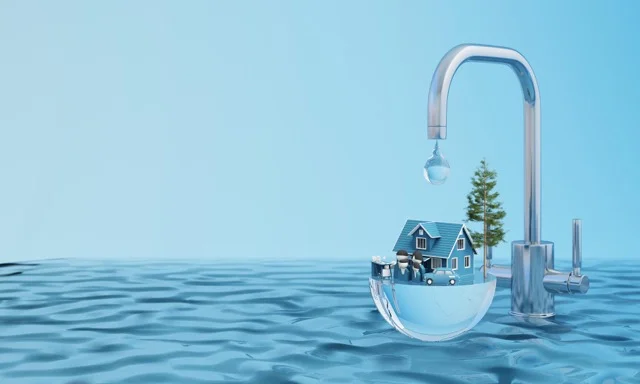The Main Principles Of Reclaim Waste
The Main Principles Of Reclaim Waste
Blog Article
Reclaim Waste Fundamentals Explained
Table of ContentsThe Buzz on Reclaim WasteSome Known Incorrect Statements About Reclaim Waste The Greatest Guide To Reclaim Waste7 Simple Techniques For Reclaim WasteGetting My Reclaim Waste To Work
Domestic sewer waste refers to the waste and products from a household septic tank. The appropriate administration and disposal of residential sewage waste require fluid waste to be moved to a sewer therapy plant where the correct methods and devices are applied to cleanse and dispose of waste.
Business waste commonly includes potential dangers, such as flammable materials or a mix of liquid and strong waste items, and calls for a much more advanced and thorough disposal process. The disposal of commercial waste typically includes the filtering of waste before transportation to ensure safe and correct disposal. Industrial waste is produced from byproducts and drainage of commercial procedures and manufacturing.
This sort of waste can not utilize the exact same sewer administration transport or processes as septic or industrial fluids. The commercial waste administration procedure calls for the examination and screening of fluid waste before it undergoes the disposal procedure (liquid waste disposal). Runoff waste is the fluid waste that originates from drainage and excess stormwater in extremely populated areas or cities
Overflow waste can cause contamination and flooding if not taken care of correctly. Guaranteeing correct waste management can protect against calamities and lower environmental damage.
The Greatest Guide To Reclaim Waste
Contact PROS Solutions today to find out about our waste administration and disposal services and the correct ways to look after the fluid waste you produce.
(https://leonaube33101.wixsite.com/reclaim-waste/post/effective-liquid-waste-removal-and-disposal-everything-you-need-to-know)Do you recognize what takes place to your water when you disengage, flush the toilet or drain pipes the cleaning machine? No? Well, it's worth understanding. This so-called 'wastewater' is not only an essential resource yet, after treatment, will certainly be launched to our land, waterways or the ocean. Made use of water from bathrooms, showers, baths, kitchen area sinks, laundries and commercial procedures is called wastewater.

water made use of to cool down machinery or tidy plant and devices). Stormwater, a type of wastewater, is drainage that moves from agricultural and metropolitan locations such as roofings, parks, gardens, roadways, paths and gutters right into stormwater drains pipes, after rainfall. Stormwater flows untreated directly to local creeks or rivers, at some point getting to the ocean.
See This Report about Reclaim Waste
In Queensland, a lot of wastewater is treated at sewage therapy plants. Wastewater is delivered from domestic or industrial sites via a system of sewers and pump terminals, understood as sewage reticulation, to a sewer therapy plant.
The Department of Natural Resources suggests neighborhood federal governments regarding handling, operating and maintaining sewerage systems and therapy plants. In unsewered areas, city governments may call for owners to install specific or household sewer treatment systems to deal with domestic wastewater from commodes, cooking areas, bathrooms and laundries. The Department of Natural Resources authorises using household systems when they are shown to be effective.
In some new neighborhoods, treatment of some stormwater to get rid of clutter, sand and crushed rock has actually begun utilizing gross toxin traps. Wastewater treatment occurs in 4 phases: Gets rid of strong issue.
Makes use of small living microorganisms understands as micro-organisms to damage down and remove staying liquified wastes and great particles. Micro-organisms and wastes are incorporated in the sludge.
8 Simple Techniques For Reclaim Waste
Nutrient elimination is not available in all sewer therapy plants due to the fact that it calls for pricey specialized devices. It is coming to be a lot more typical in Queensland. Clear fluid effluent produced after therapy might still contain disease-causing micro-organisms. If this effluent is released right into waterways such as rivers or the sea, the micro-organisms will eventually pass away out.

Many wastewater moves into the sewage system. Under the Act, local federal governments carry out authorizations and licences for ecologically pertinent tasks (ERAs) including wastewater releases that may have a regional impact.
The 45-Second Trick For Reclaim Waste
Or else, examples are considered laboratory evaluation. Often many tests are needed to develop the degrees of each of the various toxins such as oils, heavy steels and pesticides in water. Tracking gives accurate information concerning water top quality and can validate that licence conditions are being met. The info acquired with monitoring supplies the basis for making water top quality decisions.
Report this page